How To Grow Peonies The Right Way
Peonies are a perennial garden favorite for good reason. With the proper care they can put out flowers for decades. Discover how with our complete care guide.

- General Peony Care
- When to Plant Peonies
- How to Plant Peonies
- Watering - Peony Water Requirements
- Containers - Growing Peonies in Pots
- Flowers - When do Peonies Bloom?
- Fertilizing - Best Peony Fertilizers
- Pruning - Peony Pruning Guide and Winter Prep
- Problems - Common Peony Problems
- Varieties - What Are the Best Peony Varieties?
- How to Divide and Transplant Peony Bushes
Peony Quick Facts
Botanical name:
Paeonia lactiflora
Height:
2-3+ feet (0.9 m)
Spread:
3-5 feet (0.9-1.5 m)
Sun exposure:
Full sun 6-8 hours/day
Soil requirements:
Fertile, well-draining, pH 6.5-7
Hardiness zones:
2-8
When to plant:
Fall or early spring
An essential in cottage gardens, peonies might bring back memories of our grandparents’ time, when these beauties were a staple in flower gardens. Native to Eurasia and North America, peony blossoms are voluminous and heavy and some of the loveliest flowers in the garden. Luckily, peonies are easy to grow and well worth the effort if you love a little voluptuous elegance in your garden.
Gardening Know How Editor and our resident peony expert, Laura Walters, will help us dive into some of the pros, cons and considerations when it comes to growing and caring for peonies. If you aren’t familiar with peonies, you are in for a treat. The peony’s flowers are lovely and fragrant. Peony plants can grow to 50 years old and tree varieties have been known to live for up to 100 years.
General Peony Care
They grow best in USDA zones 2 - 8, but keep in mind that peonies require a cold winter to thrive. They will grow in warmer regions but only where winter temperatures provide 500 to 1000 chilling hours, or a month or so of temperatures between 32 to 40 degrees F (0 to 4 C).
Generally, peonies are cold-hardy, most types thriving best in temperate to cold climates, and especially regions with reliable rainfall.
The best soil for peonies is rich, loamy and well-draining. Peony soil needs a pH of 6.5 to 7.0, so you will want to test your soil before planting. Incorporate organic matter into the soil before growing peonies for a jump start on peony flowers.
When to Plant Peonies
The best time to plant both bare root and potted peonies is in the fall, several weeks before the first frost. It is also safe to plant a peony in early spring when the soil gets workable, but a spring planted peony bush might take longer to become firmly established and may even wait until the following year to bloom.
How to Plant Peonies
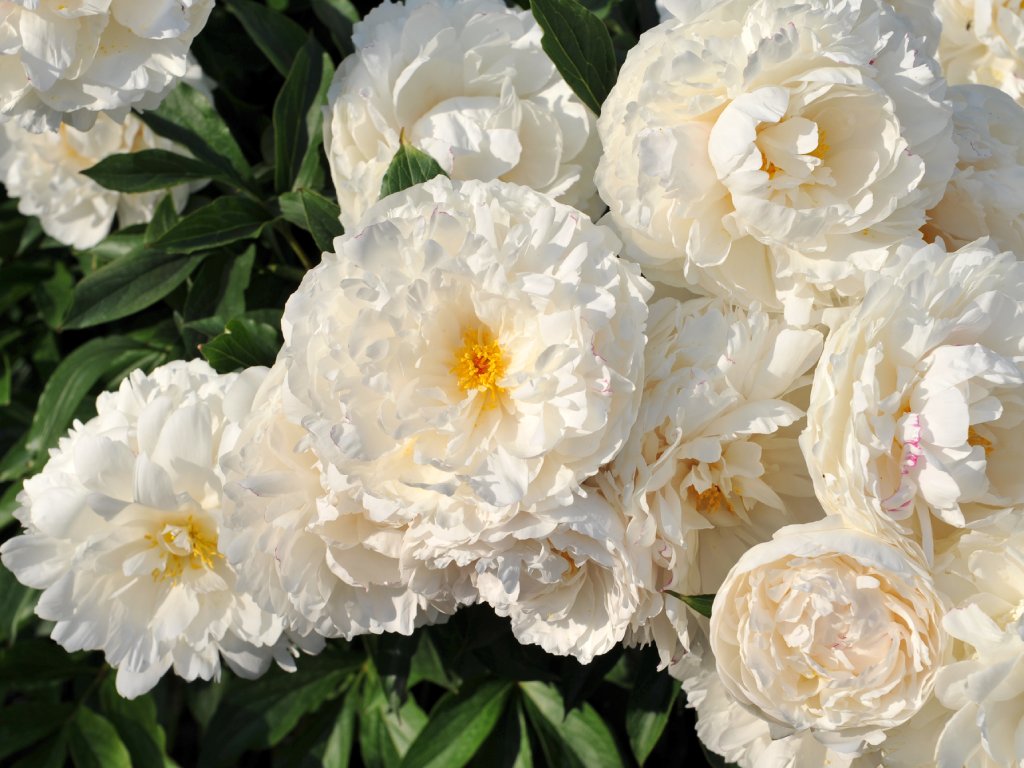
When planting a tall or double-wide peony variety it’s especially important to plan ahead for enough room to include stakes and/or a trellis to support it. Space these about 3 to 4 feet (0.9 to 1 m) apart to avoid crowding and to ensure good air circulation. Dwarf varieties need 2 feet (61 cm) of space.
Sign up for the Gardening Know How newsletter today and receive a free copy of our e-book "How to Grow Delicious Tomatoes".
While the ideal planting site should receive at least six to eight hours of sunlight each day, partial shade or dappled sunlight is acceptable, especially for tree peonies. Morning sun hours are best, and extreme heat can scorch the plants. Too much shade or shadows from trees and other plants can discourage peonies, and other plants that are too close will force them to compete for nutrients. Give peonies a sunny home and some open space.
Work your amended soil when it has dried enough to crumble a bit and is no longer wet or sticky. Again, the soil needs to be well draining and should have tested out with a slightly acidic pH of 6.5 to 7. Feel free to dig in a bit of organic compost to give your new plants a boost and provide a bit of organic mulch to protect the roots in the fall.
Plan ahead to install your staking or trellis support soon after your peonies begin to grow in spring. The big fluffy blooms hold so much water that they will droop all the way to the ground with no support.
Place bare root plants in the soil with the growing “eyes” facing up, and no more than 2 inches (5 cm) below the soil. Your planting hole should be partially filled with a “cone” of soil that will reach up under the root crown for support but be sure the roots are situated no more than 2 inches (5 cm) deep. Peonies planted too deeply may not bloom.
Watering - Peony Water Requirements
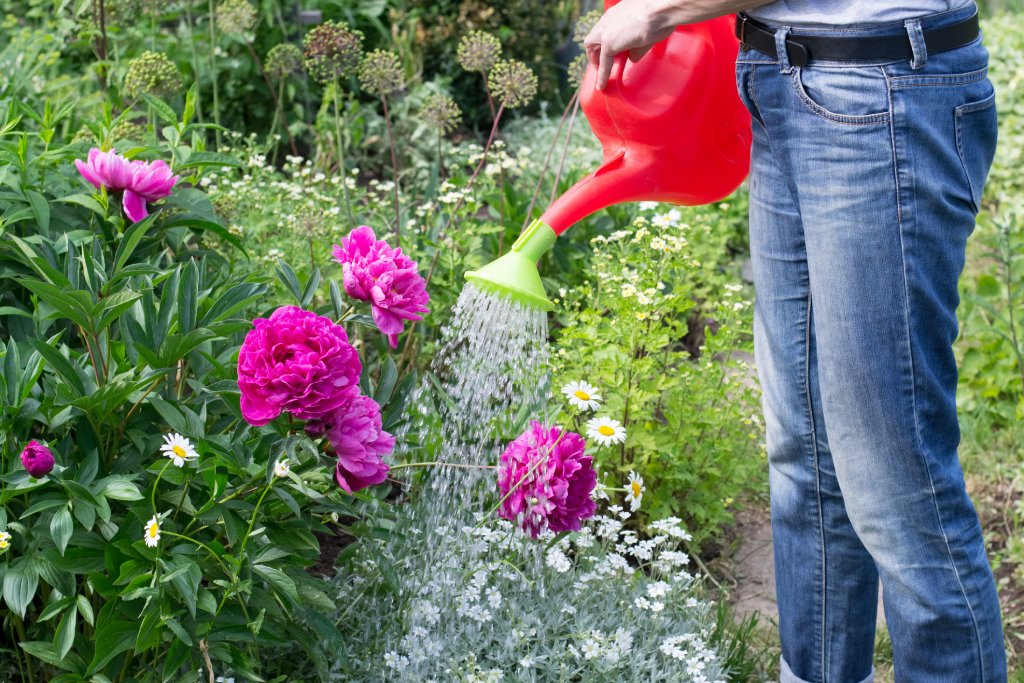
Peonies do not like “wet feet.” When newly planted you can water peonies at least twice a week as they become established, but allow the soil to dry out a bit in between watering. This is a good time to remind ourselves that the peony’s soil needs great drainage to avoid rot and fungal infections. For new plants, a deep watering helps roots grow and strengthen.
When your peony plant is well established, it appreciates a deep watering during its spring growth period. With established plants, you can allow the soil to become somewhat dry for short periods. Overwatering will create soft stems, yellowing leaves, dark spots, root rot and fungal infections. You may also see the surrounding soil attracting unwanted pests.
Containers - Growing Peonies in Pots
Even though they're relatively large plants, peonies can be grown in pots. Choose a large pot and be sure you select firm, healthy tubers. Our experts recommend a container that’s at least 18 inches (46 cm) deep, and just as wide. Drainage holes in the pot are absolutely crucial to the new plant’s health.
Use loose and well-draining soil, or a mixture of compost and peat moss. Place tubers with their “eyes” up and cover them with only 1.5 to 2 inches (3.8 to 5 cm) of soil. The soil should be kept evenly moist, but only water when the top few inches (8 cm) of soil is dry. Consider providing some type of support, like a pot trellis or stakes.
Container grown plants are more susceptible to freezing, so you may want to overwinter your potted peonies indoors or in a sheltered area.
Flowers - When do Peonies Bloom?
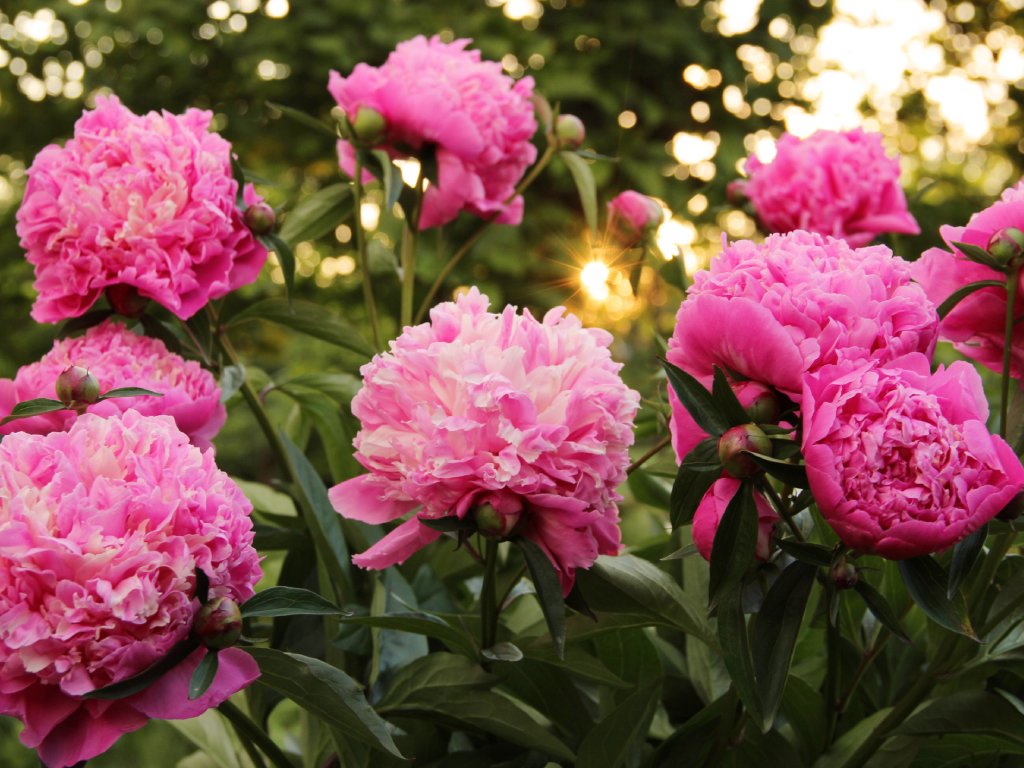
Herbaceous peony plants will begin to grow in the spring. Depending upon the size and age of the plant and the climate, its blooms should appear between late spring and the early part of summer - April, May and June. However, some newer plants may wait until the following year to bloom when they are more fully established.
If you want large flowers, remove the side buds on a stem and leave the one at the tip. If you remove the one at the tip, or the “terminal” bud, you may see more flowers, but they will be smaller.
You can expect peony flowers to be in full bloom for about a week or more, and the plants only bloom once each year. When they are well maintained, you can plan on beautiful yearly blooms for upward of 50 to 100 years from mature plants.
Fertilizing - Best Peony Fertilizers
Plan to feed your peonies in the spring and fall with a balanced fertilizer. Your local nursery will recommend a balanced fertilizer labeled 10-10-10, 10-20-10, or 5-10-5. Look for fertilizer with a higher “P,” or potassium. After their first few years it’s fine to reduce fertilizing peonies to every 3 years.
Laura Walters knows all about peonies. She restored the peonies her great-grandmother planted over 70 years ago to their former flowering glory. Laura tells us the plants were neglected for decades and only produced one or two blooms per spring. The secret to her peony success? Manure!
“Early in the spring, before flower buds emerge, I side-dress my peonies with composted cow manure. I did that for several years and since then my peonies have been full of huge, citrus-smelling blooms each May,” she told us.

Laura has been growing peonies for ten years - in fact restoring her great-grandmother's plants was what led her to a lifetime of gardening.
Pruning - Peony Pruning Guide and Winter Prep
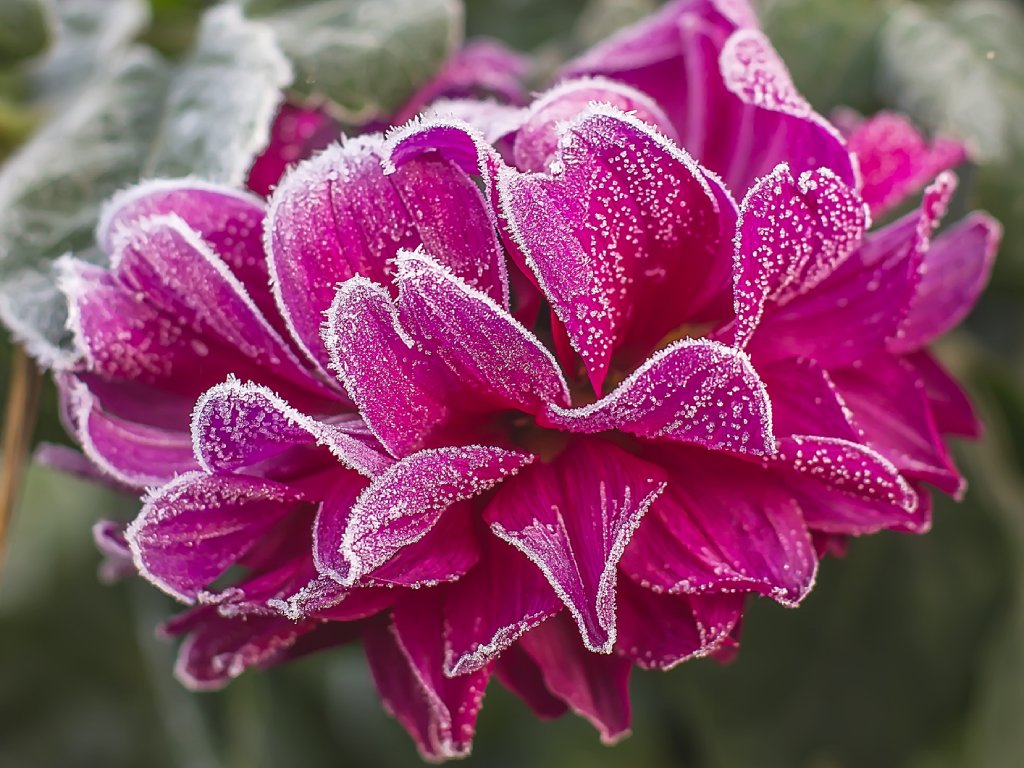
Remove any infected leaves as they appear, and deadhead spent peony flowers when they have finished blooming. Cold weather, and especially the first hard freeze, signals the end of the year for herbaceous peony plants, and that means it’s time to cut them back. If you cut them back too early before they’ve gone dormant, you may see fewer flowers next spring. Wait until late fall. And never cut tree peonies back, as they are actually shrubs and will not respond well to pruning.
Prune peony plants down to the ground, or at least within about 3 inches (7.6 cm) above ground level. If the plants have contracted any pests or fungus, be sure to remove all plant debris from the area. When the ground has frozen, you may want to spread a layer of mulch around and over the crowns of your peonies for winter protection.
Problems - Common Peony Problems
Peonies are resilient. If they sustain physical damage like getting knocked over, dug up by a dog or other tactile damage, they can often be nursed back to health. However, if you suspect your plants were preyed upon by a fungus or other disease, you may need to remove them, and be sure to plant any new peonies in a different area in the fall.
Here are some of the common peony diseases you may encounter:
Botrytis Blight
Botrytis blight on peonies is an unpleasant condition, due to a fungus that will appear during damp cool weather. All kinds of symptoms show up, such as waterlogged leaves, blackened buds, a grayish mold and softened stem tissues. Remove all the affected parts of the plant and destroy them or dispose of them, but don’t add to your compost.
Leaf Blotch
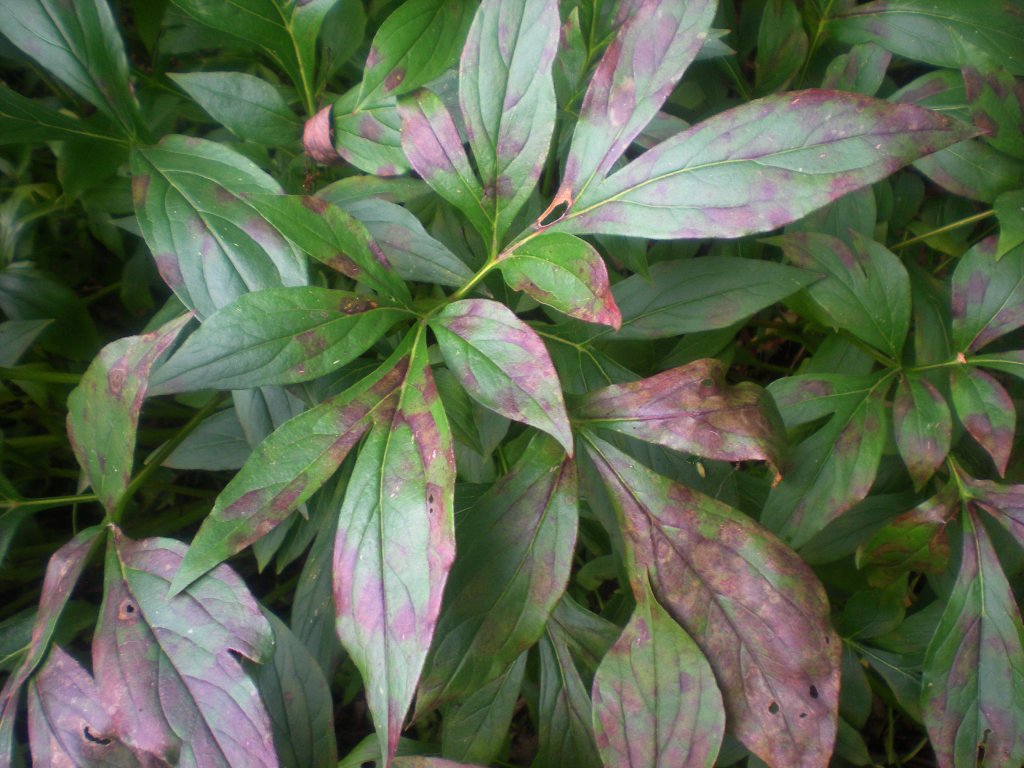
Just like it sounds, peony leaf blotch fungus creates black, brown or purplish spots on the leaves. Follow the same procedure as with blight.
Mosaic Virus
This one forms yellow spots and rings on peony leaves. You may need to destroy the entire plant to keep it from spreading and, again, don’t add it to your compost.
Wilts, rots and viruses are spread throughout plants by insects and mites. The worst offender is when a peony becomes waterlogged due to poor soil drainage. If removing all infected parts of the plant doesn’t do the trick, it’s time to remove it entirely.
Powdery Mildew
You may notice this chalky-looking fungus on your peony plants. Powdery mildew on peonies, if it becomes too extreme, can weaken the plants’ immune systems. Remove the foliage before the leaves dry up and fall. The dried out leaves can carry the fungus and you could see the problem arise again next season.
Ants
The sticky sweet material that covers the peony’s buds is a delicacy for ants. Ants on peony buds won’t cause any problems - let them have a feast.
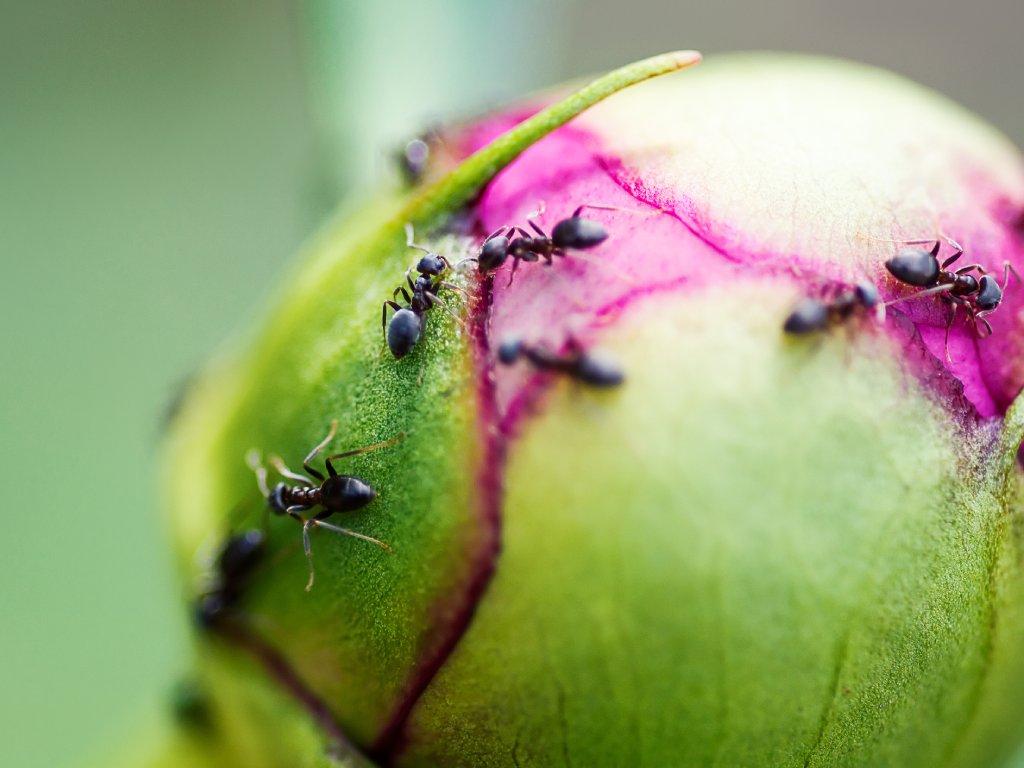
Peony Buds Not Opening
It could take more than a year for a new peony to develop its beautiful flowers. If your tubers were planted too deep, your soil isn’t draining well or the plant isn’t getting enough sunlight, you may see peony buds forming and not developing. Patience may be in order.
This condition, called “bud blast” can be related to several environmental problems, including insufficient water or sun, not enough potassium in the soil, and sometimes root or foliar nematodes. It’s a good idea to make sure surrounding trees and shrubs have not grown enough to produce too much shade around the peony plant. Also keep in mind that the peony may be competing for nutrients with surrounding plants.
Varieties - What Are the Best Peony Varieties?
With a wide range of types to choose from, it’s easy to find the peony that works best in your garden.
Herbaceous Varieties
Herbaceous peonies die back in the winter and form new buds underground. Most commonly seen in home gardens is the Paeonia lactiflora, available in several varieties and colors. Paeonia peregrina and Paeonia officinalis, the red flowered varieties, are European natives. Woodland peonies, Paeonia japonica and Paeonia obovata, are the best varieties for shady spots. With beautiful foliage that looks like a fern, P.tenuifolia produces deep red flowers.
Tree Peony
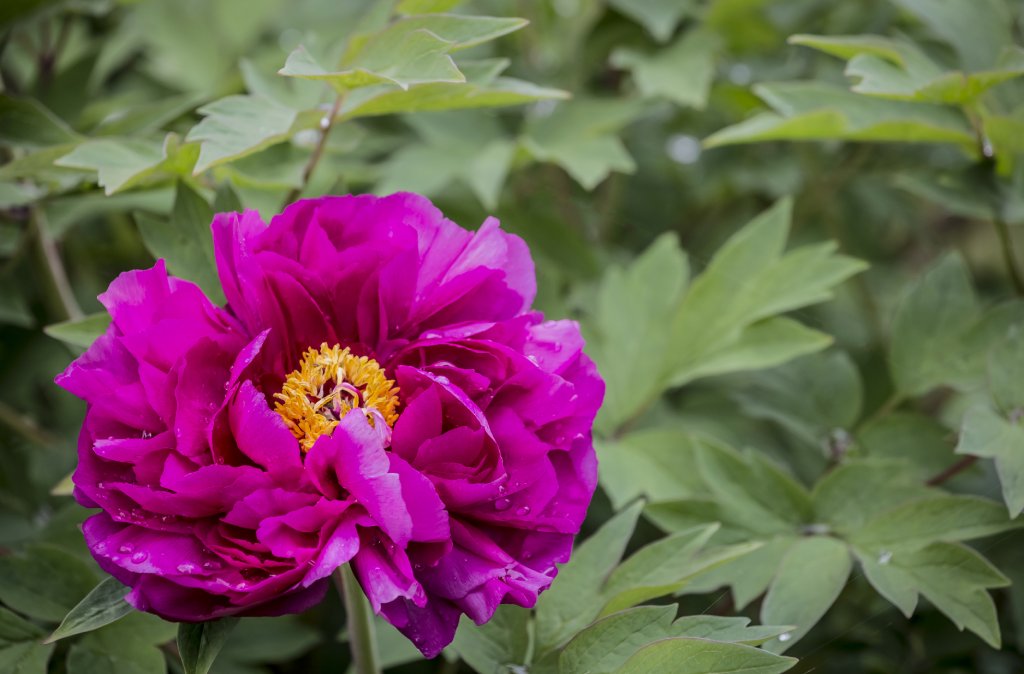
The tree peony (Paeonia suffruticosa) grows more like a shrub, with many stems that bear buds for next year. The two most popular tree peonies are the red Paeonia delavayi and the uniquely beautiful yellow Paeonia lutea.
Itoh Peony
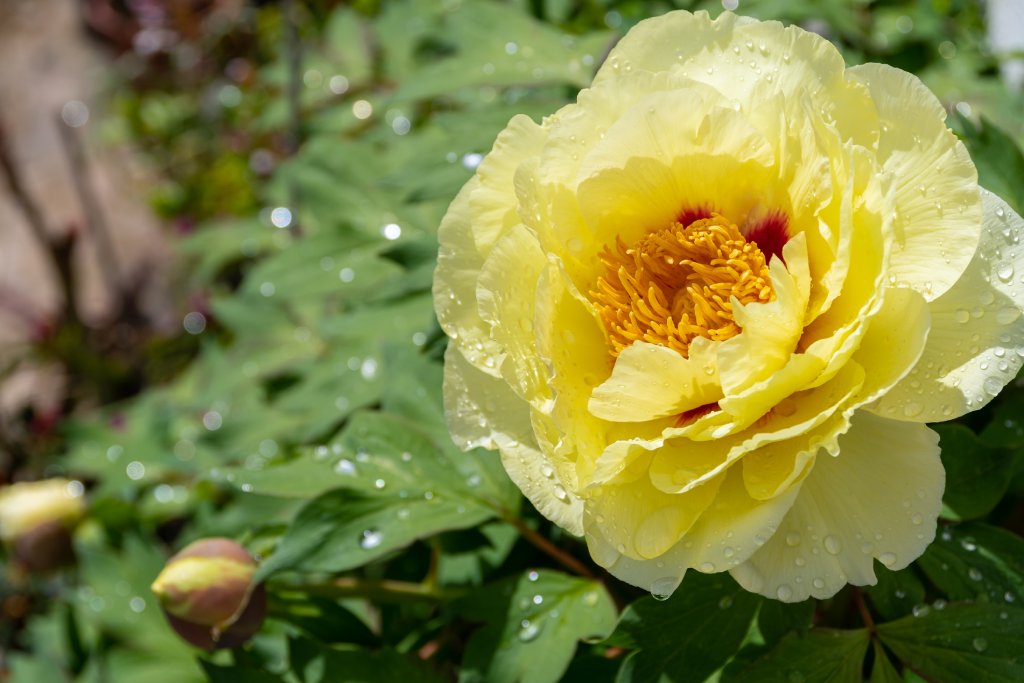
A cross between an herbaceous and tree peony, the Itoh peony variety produces stalky strong stems and large flowers. Like herbaceous types, they die all the way back in winter. This hybrid is named for its creator, Toichi Itoh.
Be sure to plant only the peony varieties that are suitable for your particular growing zone. A winter chill is required for these perennials to flower.
How to Divide and Transplant Peony Bushes
You might notice your peony’s flowering becoming sparse over time, which is normal. It may be time to divide peonies and replant them.
- Dig up the tubers in the fall
- Split them with a clean, sharp knife, being sure that each piece has a few eyes.
- Plant the pieces as you would a new tuber, not too deeply in well-draining soil, at least 3 feet (1 m) apart.
Established peony plants can easily survive being transplanted in the fall season, using the same methods of root division, and mulched to protect the roots throughout the winter.
Naturally, peonies can be raised from seed, but it can take years for them to produce a flower. Most home gardeners prefer to plant a tuber or part of a root system. Root division can be done when a plant is in dormancy.
Laura tells us, “Peony season is the highlight of the whole year in my garden. Their big pink blooms look perfect nestled between the dark purple Siberian irises and native spiderworts in spring.” She adds, “Despite their delicate-looking flowers, peonies are tough plants. Give them a little love and they will repay you with the most beautiful and best-smelling blooms in the garden.”

Caroline Bloomfield is Manager of Marketing Communications at Gardening Know How since 2019. A northwest native, she has resided and gardened in multiple zones in the U.S. and is currently at home in Bandon, Oregon. Writing and editing for various publications since 1998, her BA in American Studies from Southern Maine University includes an emphasis in English. She was raised in California by avid gardeners and continues to enjoy the natural world with an appreciation for the concepts of sustainability and organic care for the planet.